I’m often asked how to photograph fireworks. With the July 4th just days away and cities begin their firework spectaculars, I’ve put together a few tips.
These tips will work with both film and digital photography. Point and shoot cameras usually have a setting for fireworks, but read through as you can benefit.
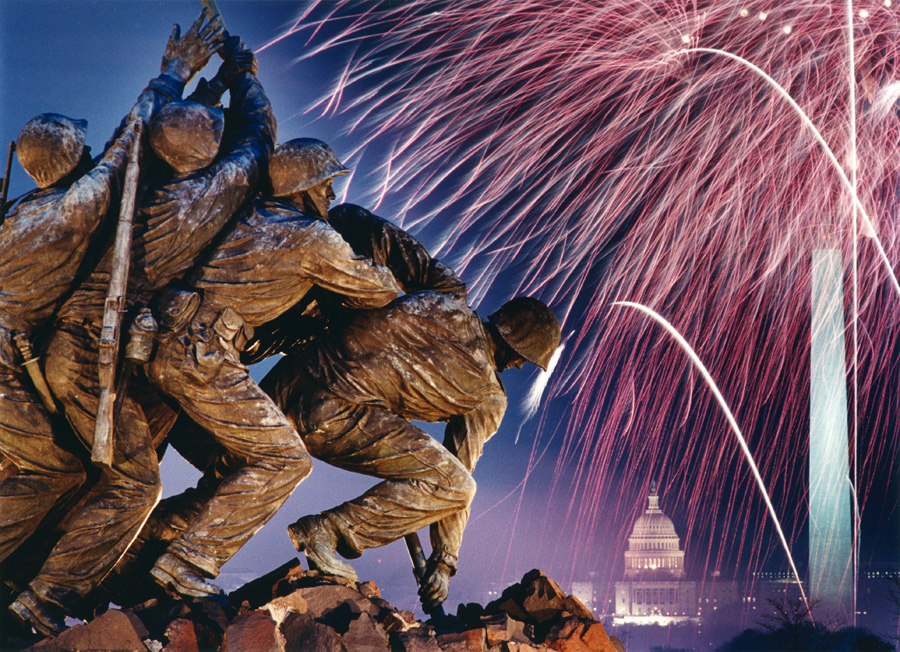
Bring the camera manual with you. Or practice changing the default settings prior to going on location. After the fireworks, you’ll want to change the settings back to default or the custom setting you had programmed. If you can’t find your manual, they’re usually online.
Bring additional batteries, film or memory cards.
Get there early; Fireworks usually start @ 10p when the sky is completely dark. Let the picture party begin.
1. Photograph fireworks with the wind blowing away from you:
- Fireworks produce smoke. If it blows towards you, your photos will be hazy and look unsharp. Check the direction of the wind. It can blow to the left, right or away from you, ideally upwind. That said; if there’s no wind or a light breeze, due to heat and humidity, the smoke tends to hang in the same area of the fireworks. If that’s the case, the beginning of the display will be the most smoke free for getting the sharpest images.
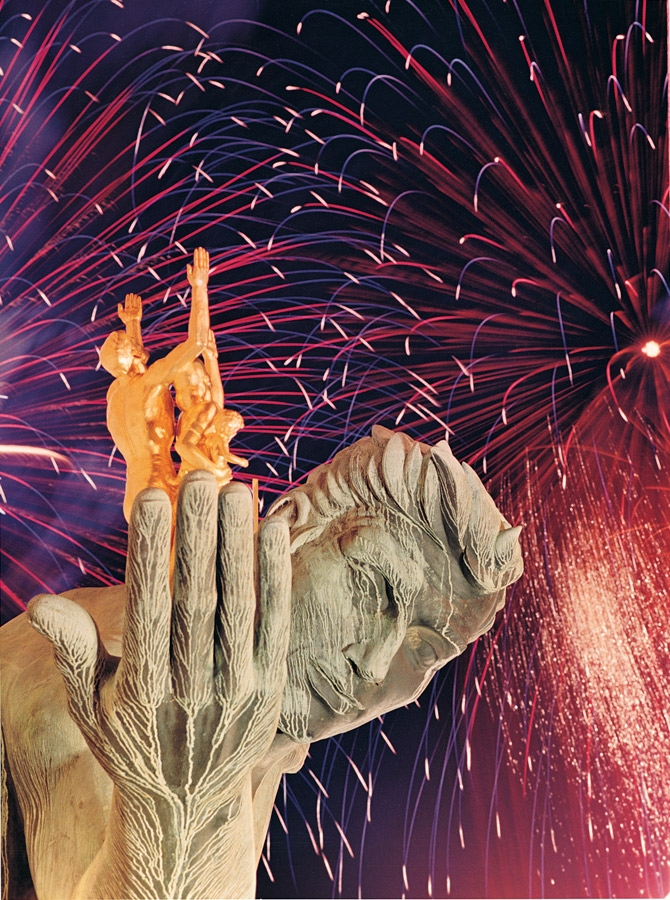
2. Rain or an electrical storm the evening before:
- There’s nothing like making landscapes and fireworks after a heavy rain, or better yet, and electrical storm. It simply washes the sky of smog, haze, smoke and humidity residue. Pending the front that passed, the clear skies could last for days.
3. Switch your camera to manual mode:
- Auto modes for fireworks, at times, confuse cameras. The sky will transition from darkness to very bright, making it difficult for many cameras to adjust. Your results might be disappointing.
3. ISO:
- Set your ISO to 100.
4. Switch your Flash OFF:
- You don’t need flash; it only has a reach of a few feet and will have no impact on your picture except to possibly have the internal software override your settings and shoot unacceptable short exposures.
5. Use a tripod:
- Most important is to secure your camera. You’ll be using long shutter speeds to capture the firework trails. Any camera movement will blur the picture. Also – stay still; the tripod is only as good as the ground supporting it. Make sure your tripod stable and level. I use a hook and hang my camera bag to weigh it down.
6. Use a remote release:
- Step away from the camera! If you manually press the shutter on the camera, no matter how lightly, you run the risk of camera shake. Use an electronic remote release; don’t touch the camera while shutter open.
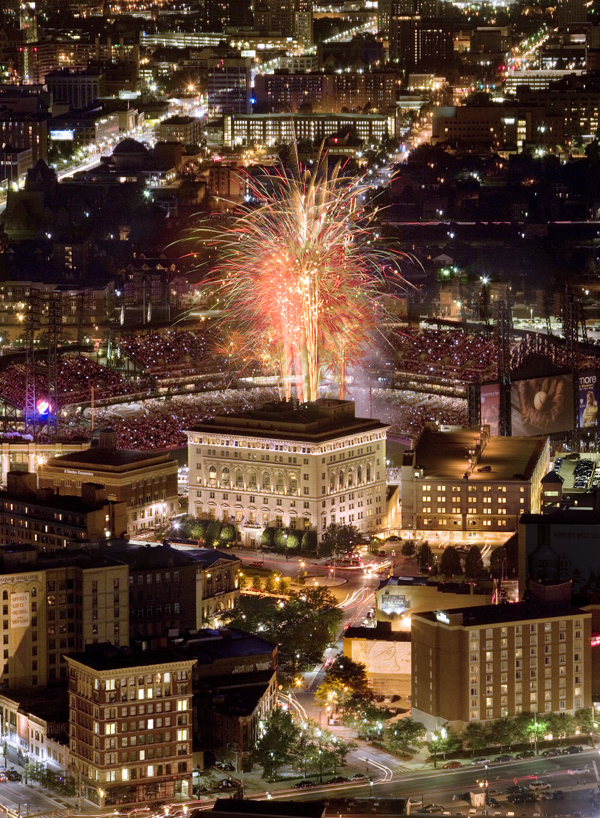
7. F Stop (Aperture):
- I usually shoot somewhere between f/8 to f/16.
8. Shutter speed:
- I shoot in the ‘bulb’ mode most often. It allows you to keep the shutter open for as long as you hold down your remote shutter release, usually 3, 5, and 10 seconds.
9. Lens:
- It’s all about composing; it’s your picture. I’ve used a fisheye for affect, being right on top of the display. I’ve also used a 800mm lens; that right. Check my blog “A Firework Story.” Zoom lenses are a good option. I would start with a 85mm. If you use a lens 200mm or longer, make certain you use the tripod mount on the lens. If you plan on using long focal lengths consider two tripods, one on the camera and one on the lens. The slightest vibration will cause dramatic movement the longer focal length you use.
10. Composition:
- Fireworks Displays are beautiful and filled with color. I’ve always found it best to have a something in the foreground: a cityscape, groups of people, a graphic element. Water produces wonderful affects reflecting color. Glass buildings act like a mirror in a dark sky. Fireworks alone in the dark sky are beautiful as well, but it’s not as strong an image.
- Take note to the area of the sky the fireworks will be displayed. Scope out the location and look for an unobstructed position. If you plan on changing lenses consider the focal lengths ahead of time, rather than in the middle of the show. Keep your horizons straight. Vertical or Horizontal? Both work, however since fireworks have a vertical trajectory, vertical seems to works best, but don’t limit yourself.
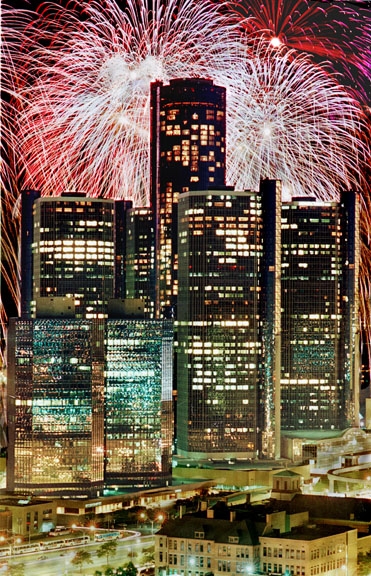
11. Focus:
- Most times, you’ll be focused at infinity and shooting at f 8-16. Depth of field should keep you in focus. Once your focus is set you won’t need to change it during the display. You can also focus on the foreground, if the fireworks will be launched within a reasonable proximity, the depth of field should hold. Don’t try to focus into the dark sky.
11. Mirror up
- If you have a feature that will allow you to lock the mirror in your camera to the up position take advantage of it. It will eliminate vibration, another no-no in long exposure photography. Once you’ve composed, focused and made all your adjustments, there will be no need to look through the lens and risk moving your camera. However, you can easily unlock your mirror to make adjustments.
12. Now make a picture:
- If find it difficult to watch a fireworks show as a spectator and shoot it; too many things that need your concentration. I make a game out of it.
- I never look through my viewfinder. Ever! I look at the sky making mental notes.
- If uncertain you have the right lens or composed correctly, for the first couple bursts, look through the lens. See how the fireworks are filling your frame. This is the perfect time to change your lens to a longer, or shorter focal length.
- I usually stand a foot away from the tripod and listen to the rockets making their way to the sky, then slowly depress remote release to open the shutter. As the fireworks begin to explode I continue to hold the shutter open until the trails disperse, generally a 5-10 seconds.
- While the shutter is open, count the seconds. Keep it within the 5-10 second range.
- First make single firework bursts; then get fancy shooting multiple bursts to paint the sky. Those exposures can take 15-30 seconds.
- Be aware of multiple bursts in one area of the sky. Some bursts are brighter and it doesn’t take too much to over expose them. You can have a beautiful area of red, but if white follows, it will wash it away.
- The finale always looks great to the naked eye, but it’s difficult to put all of those bursts on a single frame. Make several exposures and keep them within 5 seconds.
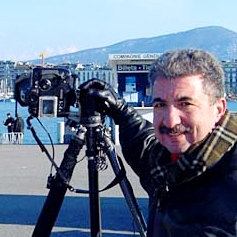
Experiment. Take risks; what do you have to lose? Most of all, have fun. If you have any questions, please don’t hesitate to ask.